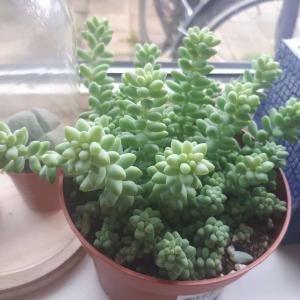成长记
Ueca
2017年10月07日

This is now huge. The second image shows a comparison with Sedum rubrotinctum.

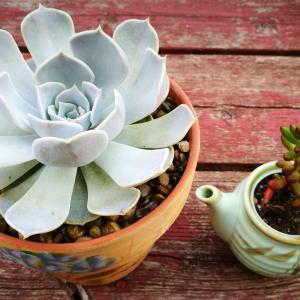


1
0
文章
Dummer. ゛☀
2017年10月02日

Scientific Name
Sedum lineare Thunb.
Common Names
Needle Stonecrop, Carpet Sedum, Linear Stonecrop Herb, Stonecrop
Synonyms
Sedum anhuiense, Sedum subtile
Scientific Classification
Family: Crassulaceae
Subfamily: Sedoideae
Tribe: Sedeae
Subtribe: Sedinae
Genus: Sedum
Description
Sedum lineare is a mat-forming evergreen succulent plant with bushy and semi trailing stems, up to 6 inches (15 cm) tall. The new growth on this plant is often upright and then lies down under the weight of the stems and in shade it tends to grow slightly more open and taller. The leaves are succulent, light green or pale greenish yellow, up to 1 inch (2.5 cm) long. It is in flower from Jul to August. The flowers are star-shaped, yellow and up to 0.8 inch (2 cm) wide.
How to Grow and Care
When growing Sedum, keep in mind that Sedum plants need very little attention or care. They will thrive in conditions that many other plants thrive in, but will do just as well in less hospitable areas. They are ideal for that part of your yard that gets too much sun or too little water to grow anything else. A common name for Sedum is Stonecrop, due to the fact that many gardeners joke that only stones need less care and live longer.
Sedum is easily planted. For shorter varieties, simply laying the plant on the ground where you want it to grow is normally enough to get the Sedum plant started there. They will send out roots from wherever the stem is touching the ground and root itself. If you would like to further ensure that the plant will start there, you can add a very thin covering of soil over the plant. For taller Sedum varieties, you can break off one of the stems and push it into the ground where you would like to grow it.
Sedum lineare Thunb.
Common Names
Needle Stonecrop, Carpet Sedum, Linear Stonecrop Herb, Stonecrop

Synonyms
Sedum anhuiense, Sedum subtile
Scientific Classification
Family: Crassulaceae
Subfamily: Sedoideae
Tribe: Sedeae
Subtribe: Sedinae
Genus: Sedum

Description
Sedum lineare is a mat-forming evergreen succulent plant with bushy and semi trailing stems, up to 6 inches (15 cm) tall. The new growth on this plant is often upright and then lies down under the weight of the stems and in shade it tends to grow slightly more open and taller. The leaves are succulent, light green or pale greenish yellow, up to 1 inch (2.5 cm) long. It is in flower from Jul to August. The flowers are star-shaped, yellow and up to 0.8 inch (2 cm) wide.

How to Grow and Care
When growing Sedum, keep in mind that Sedum plants need very little attention or care. They will thrive in conditions that many other plants thrive in, but will do just as well in less hospitable areas. They are ideal for that part of your yard that gets too much sun or too little water to grow anything else. A common name for Sedum is Stonecrop, due to the fact that many gardeners joke that only stones need less care and live longer.

Sedum is easily planted. For shorter varieties, simply laying the plant on the ground where you want it to grow is normally enough to get the Sedum plant started there. They will send out roots from wherever the stem is touching the ground and root itself. If you would like to further ensure that the plant will start there, you can add a very thin covering of soil over the plant. For taller Sedum varieties, you can break off one of the stems and push it into the ground where you would like to grow it.
0
0
文章
Dummer. ゛☀
2017年10月02日

Scientific Name
Hylotelephium spectabile (Boreau) H. Ohba
Common Names
Showy Stonecrop, Ice Plant, Butterfly Stonecrop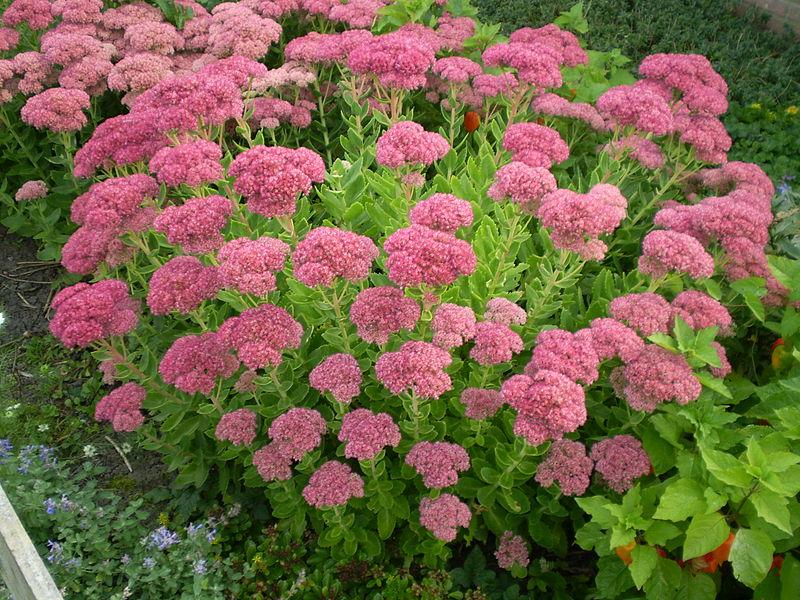
Synonyms
Sedum spectabile (basionym)
Scientific Classification
Family: Crassulaceae
Subfamily: Sedoideae
Tribe: Sedeae
Subtribe: Umbilicinae
Genus: Hylotelephium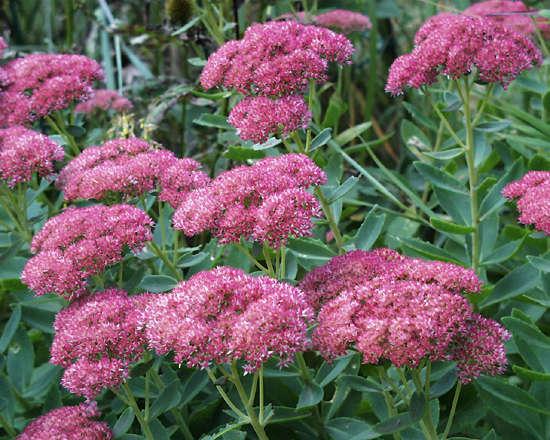
Description
Hylotelephium spectabile (Showy Stonecrop) is an herbaceous perennial with light green, simple, oval, alternate, toothed leaves, up to 3.15 inches (8 cm) long and up to 2 inches (5 cm) wide, on erect, unbranched succulent stems, up to 20 inches (50 cm) tall. The flowers are pink, star-shaped, borne in flat cymes, 6 inches (15 cm) across.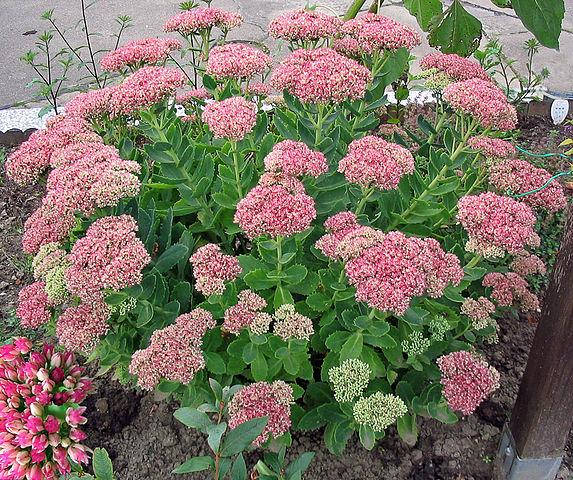
How to Grow and Care
When growing Sedum, keep in mind that Sedum plants need very little attention or care. They will thrive in conditions that many other plants thrive in, but will do just as well in less hospitable areas. They are ideal for that part of your yard that gets too much sun or too little water to grow anything else. A common name for Sedum is Stonecrop, due to the fact that many gardeners joke that only stones need less care and live longer.
Sedum is easily planted. For shorter varieties, simply laying the Sedum on the ground where you want it to grow is normally enough to get the Sedum plant started there. They will send out roots from wherever the stem is touching the ground and root itself. If you would like to further ensure that the plant will start there, you can add a very thin covering of soil over the plant.
Hylotelephium spectabile (Boreau) H. Ohba
Common Names
Showy Stonecrop, Ice Plant, Butterfly Stonecrop

Synonyms
Sedum spectabile (basionym)
Scientific Classification
Family: Crassulaceae
Subfamily: Sedoideae
Tribe: Sedeae
Subtribe: Umbilicinae
Genus: Hylotelephium

Description
Hylotelephium spectabile (Showy Stonecrop) is an herbaceous perennial with light green, simple, oval, alternate, toothed leaves, up to 3.15 inches (8 cm) long and up to 2 inches (5 cm) wide, on erect, unbranched succulent stems, up to 20 inches (50 cm) tall. The flowers are pink, star-shaped, borne in flat cymes, 6 inches (15 cm) across.

How to Grow and Care
When growing Sedum, keep in mind that Sedum plants need very little attention or care. They will thrive in conditions that many other plants thrive in, but will do just as well in less hospitable areas. They are ideal for that part of your yard that gets too much sun or too little water to grow anything else. A common name for Sedum is Stonecrop, due to the fact that many gardeners joke that only stones need less care and live longer.

Sedum is easily planted. For shorter varieties, simply laying the Sedum on the ground where you want it to grow is normally enough to get the Sedum plant started there. They will send out roots from wherever the stem is touching the ground and root itself. If you would like to further ensure that the plant will start there, you can add a very thin covering of soil over the plant.
0
1
文章
Dummer. ゛☀
2017年10月02日

Scientific Name
Sedum dendroideum Moc. & Sessé ex DC.
Common Names
Tree Stonecrop, Tree Sedum, Bush Sedum, False Hens and Chickens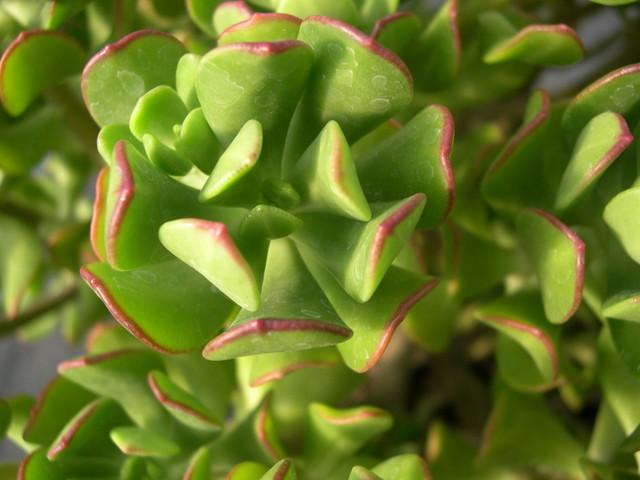
Synonyms
Sedum dendroideum subsp. dendroideum
Scientific Classification
Family: Crassulaceae
Subfamily: Sedoideae
Tribe: Sedeae
Subtribe: Sedinae
Genus: Sedum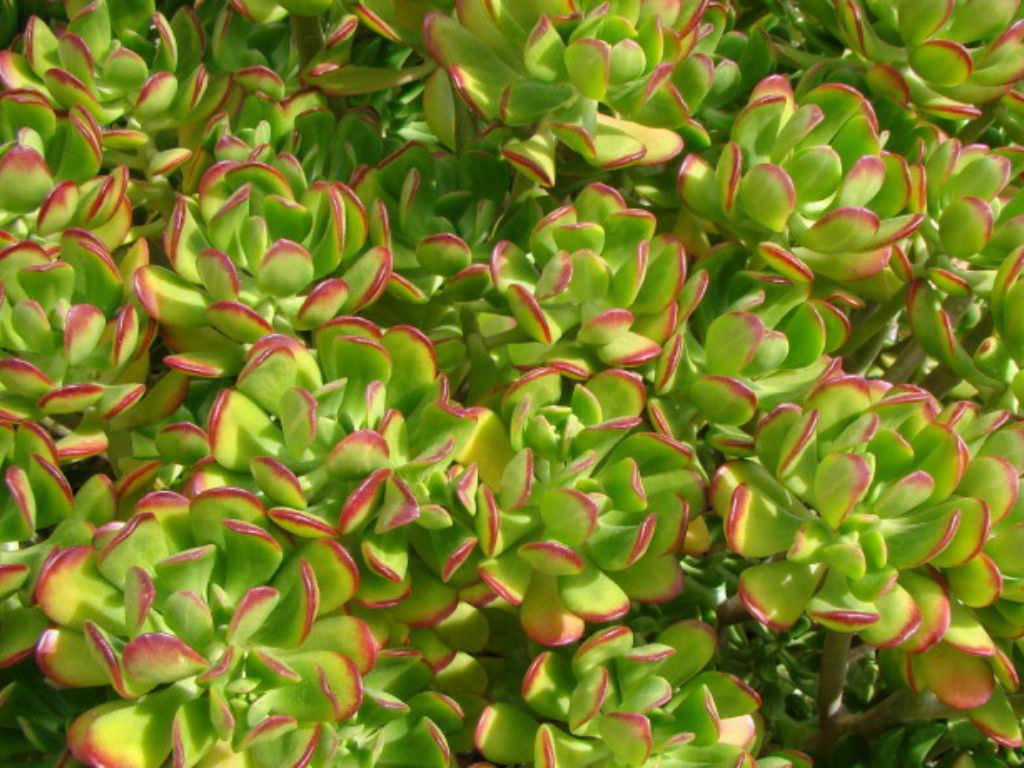
Description
Sedum dendroideum is a small shrub up to 3 feet (90 cm) tall spreading up to 4 feet (1.2 m) wide and rooting along stems to form a large mass. Leaves are 1.5 inch (2.8 cm) long, green, spathulate with an almost ovate leaf that is easily distinguished from the only other similar species, Sedum praealtum, by the presence of subepidermal glands along the leaf margin. The large clusters of small vivid yellow, star-like flowers form above the foliage in late winter and early spring.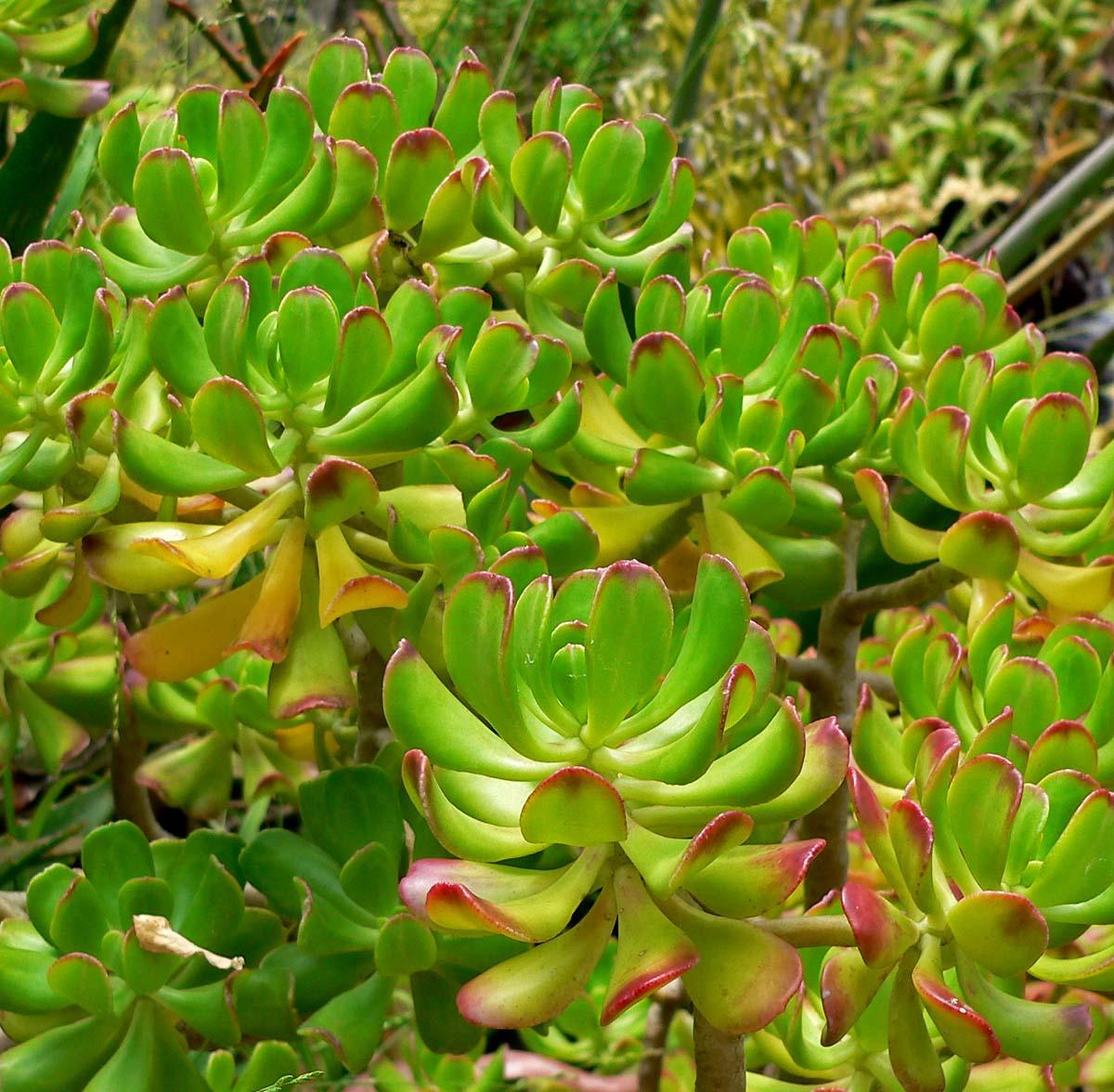
How to Grow and Care
When growing Sedum, keep in mind that Sedum plants need very little attention or care. They will thrive in conditions that many other plants thrive in, but will do just as well in less hospitable areas. They are ideal for that part of your yard that gets too much sun or too little water to grow anything else. A common name for Sedum is Stonecrop, due to the fact that many gardeners joke that only stones need less care and live longer.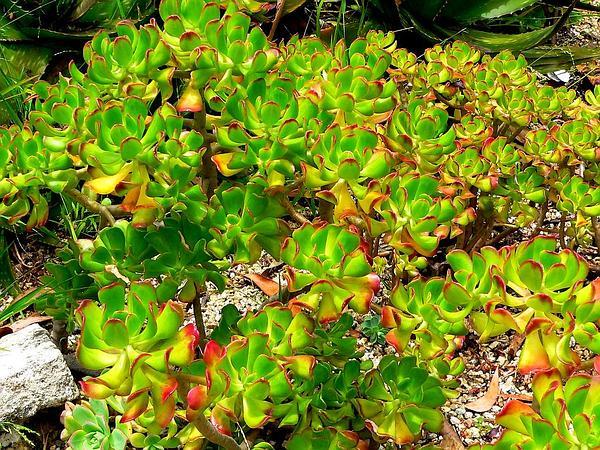
Sedum is easily planted. For shorter varieties, simply laying the plant on the ground where you want it to grow is normally enough to get the Sedum plant started there. They will send out roots from wherever the stem is touching the ground and root itself. If you would like to further ensure that the plant will start there, you can add a very thin covering of soil over the plant. For taller Sedum varieties, you can break off one of the stems and push it into the ground where you would like to grow it.
Sedum dendroideum Moc. & Sessé ex DC.
Common Names
Tree Stonecrop, Tree Sedum, Bush Sedum, False Hens and Chickens

Synonyms
Sedum dendroideum subsp. dendroideum
Scientific Classification
Family: Crassulaceae
Subfamily: Sedoideae
Tribe: Sedeae
Subtribe: Sedinae
Genus: Sedum

Description
Sedum dendroideum is a small shrub up to 3 feet (90 cm) tall spreading up to 4 feet (1.2 m) wide and rooting along stems to form a large mass. Leaves are 1.5 inch (2.8 cm) long, green, spathulate with an almost ovate leaf that is easily distinguished from the only other similar species, Sedum praealtum, by the presence of subepidermal glands along the leaf margin. The large clusters of small vivid yellow, star-like flowers form above the foliage in late winter and early spring.

How to Grow and Care
When growing Sedum, keep in mind that Sedum plants need very little attention or care. They will thrive in conditions that many other plants thrive in, but will do just as well in less hospitable areas. They are ideal for that part of your yard that gets too much sun or too little water to grow anything else. A common name for Sedum is Stonecrop, due to the fact that many gardeners joke that only stones need less care and live longer.

Sedum is easily planted. For shorter varieties, simply laying the plant on the ground where you want it to grow is normally enough to get the Sedum plant started there. They will send out roots from wherever the stem is touching the ground and root itself. If you would like to further ensure that the plant will start there, you can add a very thin covering of soil over the plant. For taller Sedum varieties, you can break off one of the stems and push it into the ground where you would like to grow it.
0
2
文章
Dummer. ゛☀
2017年10月02日

Scientific Name
Sedum spathulifolium Hook.
Common Names
Broadleaf Stonecrop, Colorado Stonecrop, Pacific Stonecrop, Spatula-leaved Stonecrop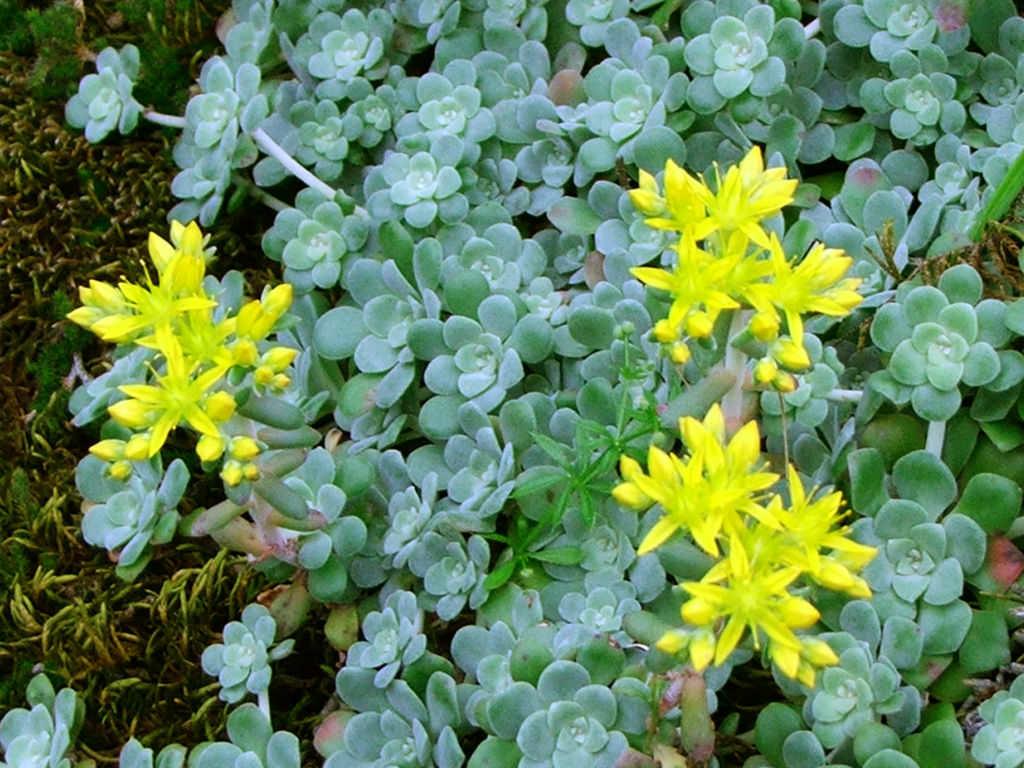
Synonyms
Cotyledon anomala, Gormania anomala, Sedum anomalum, Sedum spathulifolium subsp. spathulifolium, Sedum woodii
Scientific Classification
Family: Crassulaceae
Subfamily: Sedoideae
Tribe: Sedeae
Subtribe: Sedinae
Genus: Sedum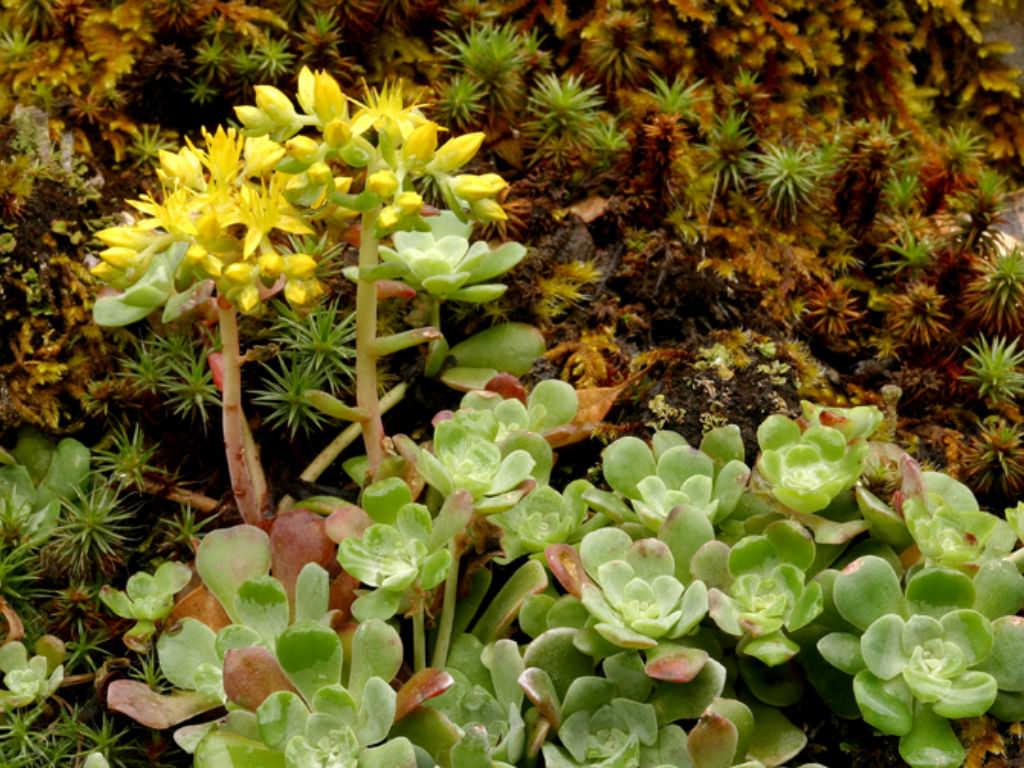
Description
Sedum spathulifolium is a quite variable succulent plant up to 4 inches (10 cm) tall, producing mats of basal rosettes from a system of rhizomes. The basal leaves are up to 0.8 inches (2 cm) long. They are sometimes coated in a waxy, powdery looking exudate. The inflorescence is a short, erect array of many small flowers with yellow petals. The specific epithet “spathulifolium” refers to the spade-shaped leaves.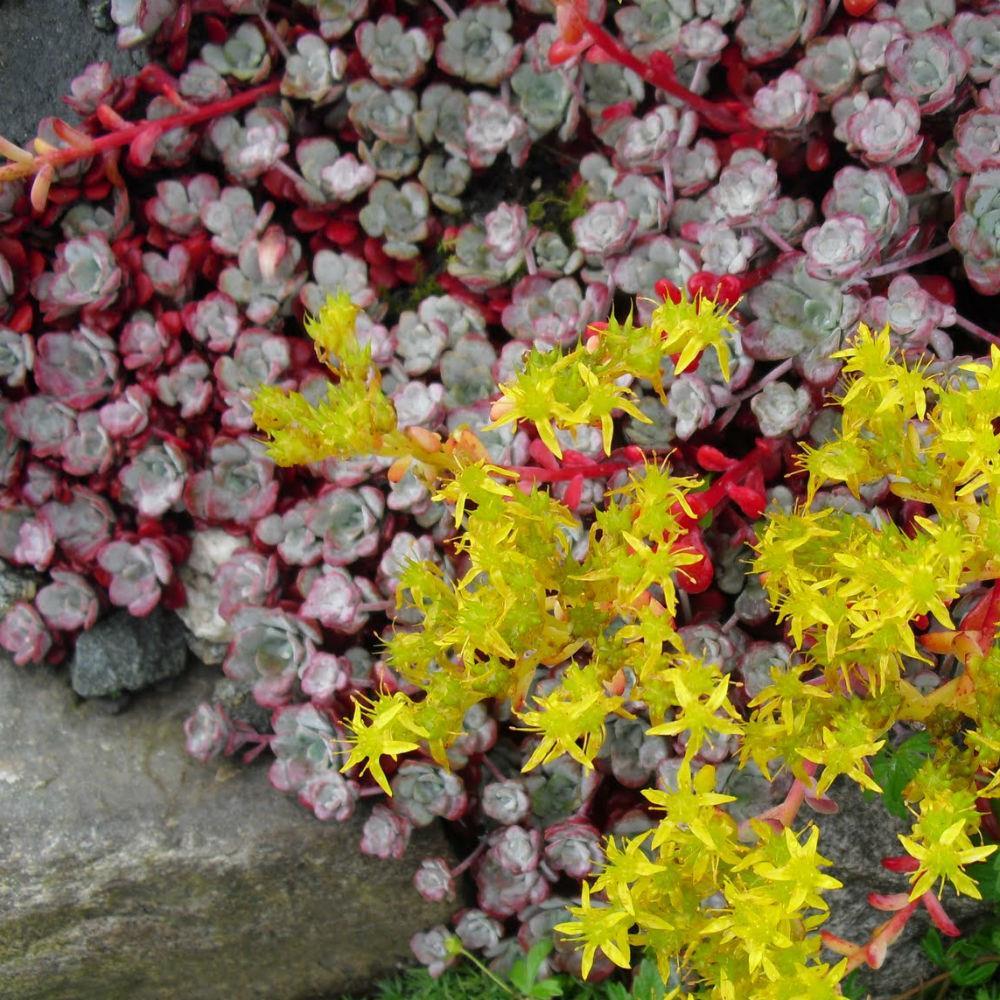
How to Grow and Care
When growing Sedum, keep in mind that Sedum plants need very little attention or care. They will thrive in conditions that many other plants thrive in, but will do just as well in less hospitable areas. They are ideal for that part of your yard that gets too much sun or too little water to grow anything else. A common name for Sedum is Stonecrop, due to the fact that many gardeners joke that only stones need less care and live longer.
Sedum is easily planted. For shorter varieties, simply laying the plant on the ground where you want it to grow is normally enough to get the Sedum plant started there. They will send out roots from wherever the stem is touching the ground and root itself. If you would like to further ensure that the plant will start there, you can add a very thin covering of soil over the plant. For taller Sedum varieties, you can break off one of the stems and push it into the ground where you would like to grow it.
Sedum spathulifolium Hook.
Common Names
Broadleaf Stonecrop, Colorado Stonecrop, Pacific Stonecrop, Spatula-leaved Stonecrop

Synonyms
Cotyledon anomala, Gormania anomala, Sedum anomalum, Sedum spathulifolium subsp. spathulifolium, Sedum woodii
Scientific Classification
Family: Crassulaceae
Subfamily: Sedoideae
Tribe: Sedeae
Subtribe: Sedinae
Genus: Sedum

Description
Sedum spathulifolium is a quite variable succulent plant up to 4 inches (10 cm) tall, producing mats of basal rosettes from a system of rhizomes. The basal leaves are up to 0.8 inches (2 cm) long. They are sometimes coated in a waxy, powdery looking exudate. The inflorescence is a short, erect array of many small flowers with yellow petals. The specific epithet “spathulifolium” refers to the spade-shaped leaves.

How to Grow and Care
When growing Sedum, keep in mind that Sedum plants need very little attention or care. They will thrive in conditions that many other plants thrive in, but will do just as well in less hospitable areas. They are ideal for that part of your yard that gets too much sun or too little water to grow anything else. A common name for Sedum is Stonecrop, due to the fact that many gardeners joke that only stones need less care and live longer.

Sedum is easily planted. For shorter varieties, simply laying the plant on the ground where you want it to grow is normally enough to get the Sedum plant started there. They will send out roots from wherever the stem is touching the ground and root itself. If you would like to further ensure that the plant will start there, you can add a very thin covering of soil over the plant. For taller Sedum varieties, you can break off one of the stems and push it into the ground where you would like to grow it.
1
3
文章
Dummer. ゛☀
2017年10月02日

Scientific Name
Sedum furfuraceum Moran
Common Names
Bonsai Sedum
Scientific Classification
Family: Crassulaceae
Subfamily: Sedoideae
Tribe: Sedeae
Subtribe: Sedinae
Genus: Sedum
Description
Sedum furfuraceum is a low growing, branching succulent up to 4 inches (10 cm) tall and spreading slowly up to 1 foot (30 cm) wide, on creeping stems with small upturned up to 0.4 inch (1 cm) long, egg-shaped, dark green leaves, covered in scurfy, whitish scales and aligned in tight spiral rows. Leaves are often reddish purple in bright light and lower leaves turn a reddish-orange hue and later drop off to expose twisted, thick, gray-white stems. In early spring appear the pinkish-white, star-like flowers that each lasts for about 10 days.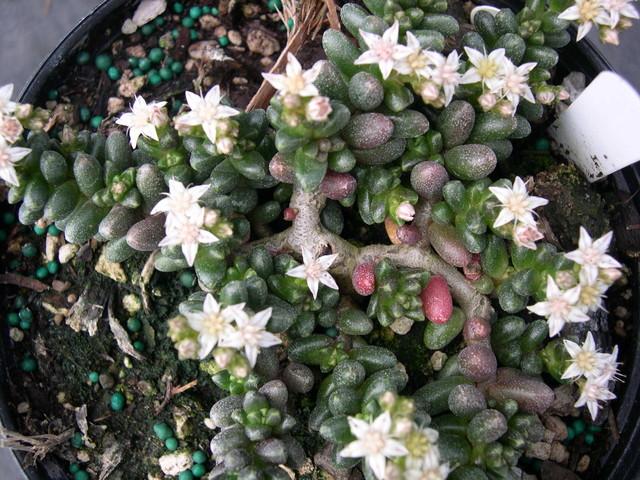
How to Grow and Care
When growing Sedum, keep in mind that Sedum plants need very little attention or care. They will thrive in conditions that many other plants thrive in, but will do just as well in less hospitable areas. They are ideal for that part of your yard that gets too much sun or too little water to grow anything else. A common name for Sedum is Stonecrop, due to the fact that many gardeners joke that only stones need less care and live longer.
Sedum is easily planted. For shorter varieties, simply laying the plant on the ground where you want it to grow is normally enough to get the Sedum plant started there. They will send out roots from wherever the stem is touching the ground and root itself. If you would like to further ensure that the plant will start there, you can add a very thin covering of soil over the plant. For taller Sedum varieties, you can break off one of the stems and push it into the ground where you would like to grow it.
Sedum furfuraceum Moran
Common Names
Bonsai Sedum
Scientific Classification
Family: Crassulaceae
Subfamily: Sedoideae
Tribe: Sedeae
Subtribe: Sedinae
Genus: Sedum

Description
Sedum furfuraceum is a low growing, branching succulent up to 4 inches (10 cm) tall and spreading slowly up to 1 foot (30 cm) wide, on creeping stems with small upturned up to 0.4 inch (1 cm) long, egg-shaped, dark green leaves, covered in scurfy, whitish scales and aligned in tight spiral rows. Leaves are often reddish purple in bright light and lower leaves turn a reddish-orange hue and later drop off to expose twisted, thick, gray-white stems. In early spring appear the pinkish-white, star-like flowers that each lasts for about 10 days.

How to Grow and Care
When growing Sedum, keep in mind that Sedum plants need very little attention or care. They will thrive in conditions that many other plants thrive in, but will do just as well in less hospitable areas. They are ideal for that part of your yard that gets too much sun or too little water to grow anything else. A common name for Sedum is Stonecrop, due to the fact that many gardeners joke that only stones need less care and live longer.

Sedum is easily planted. For shorter varieties, simply laying the plant on the ground where you want it to grow is normally enough to get the Sedum plant started there. They will send out roots from wherever the stem is touching the ground and root itself. If you would like to further ensure that the plant will start there, you can add a very thin covering of soil over the plant. For taller Sedum varieties, you can break off one of the stems and push it into the ground where you would like to grow it.
1
0
文章
Dummer. ゛☀
2017年10月02日

Scientific Name
Sedum dasyphyllum L.
Common Names
Corsican Stonecrop, Thick-leaved Stonecrop, Thick Leaf Stonecrop, Blue Tears Sedum, Love and Tangles, Love and Tangle
Synonyms
Oreosedum dasyphyllum, Sedum burnatii, Sedum corsicum, Sedum glanduliferum, Sedum glaucum, Sedum moroderi, Sedum nebrodense
Scientific Classification
Family: Crassulaceae
Subfamily: Sedoideae
Tribe: Sedeae
Subtribe: Sedinae
Genus: Sedum
Description
Sedum dasyphyllum is a small perennial plant up to 5 inches (12.5 cm) tall when in flower, with green-turquoise or gray-green opposite leaves and a creeping stem forming shrubs. The flowers are white and small with little black dots on the petals and green ovaries.
How to Grow and Care
When growing Sedum, keep in mind that Sedum plants need very little attention or care. They will thrive in conditions that many other plants thrive in, but will do just as well in less hospitable areas. They are ideal for that part of your yard that gets too much sun or too little water to grow anything else. A common name for Sedum is Stonecrop, due to the fact that many gardeners joke that only stones need less care and live longer.
Sedum is easily planted. For shorter varieties, simply laying the plant on the ground where you want it to grow is normally enough to get the Sedum plant started there. They will send out roots from wherever the stem is touching the ground and root itself. If you would like to further ensure that the plant will start there, you can add a very thin covering of soil over the plant. For taller Sedum varieties, you can break off one of the stems and push it into the ground where you would like to grow it.
Sedum dasyphyllum L.
Common Names
Corsican Stonecrop, Thick-leaved Stonecrop, Thick Leaf Stonecrop, Blue Tears Sedum, Love and Tangles, Love and Tangle

Synonyms
Oreosedum dasyphyllum, Sedum burnatii, Sedum corsicum, Sedum glanduliferum, Sedum glaucum, Sedum moroderi, Sedum nebrodense
Scientific Classification
Family: Crassulaceae
Subfamily: Sedoideae
Tribe: Sedeae
Subtribe: Sedinae
Genus: Sedum

Description
Sedum dasyphyllum is a small perennial plant up to 5 inches (12.5 cm) tall when in flower, with green-turquoise or gray-green opposite leaves and a creeping stem forming shrubs. The flowers are white and small with little black dots on the petals and green ovaries.

How to Grow and Care
When growing Sedum, keep in mind that Sedum plants need very little attention or care. They will thrive in conditions that many other plants thrive in, but will do just as well in less hospitable areas. They are ideal for that part of your yard that gets too much sun or too little water to grow anything else. A common name for Sedum is Stonecrop, due to the fact that many gardeners joke that only stones need less care and live longer.

Sedum is easily planted. For shorter varieties, simply laying the plant on the ground where you want it to grow is normally enough to get the Sedum plant started there. They will send out roots from wherever the stem is touching the ground and root itself. If you would like to further ensure that the plant will start there, you can add a very thin covering of soil over the plant. For taller Sedum varieties, you can break off one of the stems and push it into the ground where you would like to grow it.
1
2
文章
Dummer. ゛☀
2017年10月02日

Scientific Name
Sedum dasyphyllum ‘Minor’
Common Names
Corsican Stonecrop, Thick-leaved Stonecrop, Thick Leaf Stonecrop, Blue Tears Sedum, Love and Tangles, Love and Tangle
Scientific Classification
Family: Crassulaceae
Subfamily: Sedoideae
Tribe: Sedeae
Subtribe: Sedinae
Genus: Sedum
Description
Sedum dasyphyllum ‘Minor’ is a small, perennial succulent plant, up to 5 inches (12.5 cm) tall when in flower, with blue-green and purple (more purple in part sun), opposite leaves and a creeping stem forming shrubs. The flowers are white and small with little black dots on the petals and green ovaries.
How to Grow and Care
When growing Sedum, keep in mind that Sedum plants need very little attention or care. They will thrive in conditions that many other plants thrive in, but will do just as well in less hospitable areas. They are ideal for that part of your yard that gets too much sun or too little water to grow anything else. A common name for Sedum is Stonecrop, due to the fact that many gardeners joke that only stones need less care and live longer.
Sedum is easily planted. For shorter varieties, simply laying the plant on the ground where you want it to grow is normally enough to get the Sedum plant started there. They will send out roots from wherever the stem is touching the ground and root itself. If you would like to further ensure that the plant will start there, you can add a very thin covering of soil over the plant. For taller Sedum varieties, you can break off one of the stems and push it into the ground where you would like to grow it.
Sedum dasyphyllum ‘Minor’
Common Names
Corsican Stonecrop, Thick-leaved Stonecrop, Thick Leaf Stonecrop, Blue Tears Sedum, Love and Tangles, Love and Tangle

Scientific Classification
Family: Crassulaceae
Subfamily: Sedoideae
Tribe: Sedeae
Subtribe: Sedinae
Genus: Sedum

Description
Sedum dasyphyllum ‘Minor’ is a small, perennial succulent plant, up to 5 inches (12.5 cm) tall when in flower, with blue-green and purple (more purple in part sun), opposite leaves and a creeping stem forming shrubs. The flowers are white and small with little black dots on the petals and green ovaries.

How to Grow and Care
When growing Sedum, keep in mind that Sedum plants need very little attention or care. They will thrive in conditions that many other plants thrive in, but will do just as well in less hospitable areas. They are ideal for that part of your yard that gets too much sun or too little water to grow anything else. A common name for Sedum is Stonecrop, due to the fact that many gardeners joke that only stones need less care and live longer.

Sedum is easily planted. For shorter varieties, simply laying the plant on the ground where you want it to grow is normally enough to get the Sedum plant started there. They will send out roots from wherever the stem is touching the ground and root itself. If you would like to further ensure that the plant will start there, you can add a very thin covering of soil over the plant. For taller Sedum varieties, you can break off one of the stems and push it into the ground where you would like to grow it.
1
5
文章
Dummer. ゛☀
2017年10月02日

Scientific Name
Sedum rupestre L.
Common Names
Reflexed Stonecrop, Blue Stonecrop, Rock Stonecrop, Jenny’s Stonecrop, Prick Madam
Synonyms
Sedum reflexum
Scientific Classification
Family: Crassulaceae
Subfamily: Sedoideae
Tribe: Sedeae
Subtribe: Sedinae
Genus: Sedum
Description
Sedum rupestre is a mat-forming stonecrop with small, fleshy, gray-green leaves up to 0.75 inch (2 cm) long. It is an evergreen plant that grows up to 4 inches (10 cm) tall but spreads up to 24 inches (60 cm) wide. The yellow flowers are star-shaped, up to 0.5 inch (1.2 cm) wide, and appear in terminal cymes in summer.
How to Grow and Care
When growing Sedum, keep in mind that Sedum plants need very little attention or care. They will thrive in conditions that many other plants thrive in, but will do just as well in less hospitable areas. They are ideal for that part of your yard that gets too much sun or too little water to grow anything else. A common name for Sedum is Stonecrop, due to the fact that many gardeners joke that only stones need less care and live longer.
Sedum is easily planted. For shorter varieties, simply laying the plant on the ground where you want it to grow is normally enough to get the Sedum plant started there. They will send out roots from wherever the stem is touching the ground and root itself. If you would like to further ensure that the plant will start there, you can add a very thin covering of soil over the plant. For taller Sedum varieties, you can break off one of the stems and push it into the ground where you would like to grow it.
Sedum rupestre L.
Common Names
Reflexed Stonecrop, Blue Stonecrop, Rock Stonecrop, Jenny’s Stonecrop, Prick Madam

Synonyms
Sedum reflexum
Scientific Classification
Family: Crassulaceae
Subfamily: Sedoideae
Tribe: Sedeae
Subtribe: Sedinae
Genus: Sedum

Description
Sedum rupestre is a mat-forming stonecrop with small, fleshy, gray-green leaves up to 0.75 inch (2 cm) long. It is an evergreen plant that grows up to 4 inches (10 cm) tall but spreads up to 24 inches (60 cm) wide. The yellow flowers are star-shaped, up to 0.5 inch (1.2 cm) wide, and appear in terminal cymes in summer.

How to Grow and Care
When growing Sedum, keep in mind that Sedum plants need very little attention or care. They will thrive in conditions that many other plants thrive in, but will do just as well in less hospitable areas. They are ideal for that part of your yard that gets too much sun or too little water to grow anything else. A common name for Sedum is Stonecrop, due to the fact that many gardeners joke that only stones need less care and live longer.

Sedum is easily planted. For shorter varieties, simply laying the plant on the ground where you want it to grow is normally enough to get the Sedum plant started there. They will send out roots from wherever the stem is touching the ground and root itself. If you would like to further ensure that the plant will start there, you can add a very thin covering of soil over the plant. For taller Sedum varieties, you can break off one of the stems and push it into the ground where you would like to grow it.
0
0
文章
Dummer. ゛☀
2017年10月02日

Scientific Name
Sedum rupestre ‘Blue Spruce’
Common Names
Blue Spruce Stonecrop
Synonyms
Sedum reflexum ‘Blue Spruce’
Scientific Classification
Family: Crassulaceae
Subfamily: Sedoideae
Tribe: Sedeae
Subtribe: Sedinae
Genus: Sedum
Description
Sedum rupestre ‘Blue Spruce’ is a drought tolerant groundcover with small, succulent blue leaves reminiscent of the needles of a blue spruce conifer. In June deep mauve pink stems rise up to 10 inches (25 cm) and are topped with brilliant yellow flowers. It is great for rock walls, green roofs, walkways and containers. Evergreen in warmer zones.
How to Grow and Care
When growing Sedum, keep in mind that Sedum plants need very little attention or care. They will thrive in conditions that many other plants thrive in, but will do just as well in less hospitable areas. They are ideal for that part of your yard that gets too much sun or too little water to grow anything else. A common name for Sedum is Stonecrop, due to the fact that many gardeners joke that only stones need less care and live longer.
Sedum is easily planted. For shorter varieties, simply laying the plant on the ground where you want it to grow is normally enough to get the Sedum plant started there. They will send out roots from wherever the stem is touching the ground and root itself. If you would like to further ensure that the plant will start there, you can add a very thin covering of soil over the plant. For taller Sedum varieties, you can break off one of the stems and push it into the ground where you would like to grow it.
Sedum rupestre ‘Blue Spruce’
Common Names
Blue Spruce Stonecrop

Synonyms
Sedum reflexum ‘Blue Spruce’
Scientific Classification
Family: Crassulaceae
Subfamily: Sedoideae
Tribe: Sedeae
Subtribe: Sedinae
Genus: Sedum

Description
Sedum rupestre ‘Blue Spruce’ is a drought tolerant groundcover with small, succulent blue leaves reminiscent of the needles of a blue spruce conifer. In June deep mauve pink stems rise up to 10 inches (25 cm) and are topped with brilliant yellow flowers. It is great for rock walls, green roofs, walkways and containers. Evergreen in warmer zones.

How to Grow and Care
When growing Sedum, keep in mind that Sedum plants need very little attention or care. They will thrive in conditions that many other plants thrive in, but will do just as well in less hospitable areas. They are ideal for that part of your yard that gets too much sun or too little water to grow anything else. A common name for Sedum is Stonecrop, due to the fact that many gardeners joke that only stones need less care and live longer.

Sedum is easily planted. For shorter varieties, simply laying the plant on the ground where you want it to grow is normally enough to get the Sedum plant started there. They will send out roots from wherever the stem is touching the ground and root itself. If you would like to further ensure that the plant will start there, you can add a very thin covering of soil over the plant. For taller Sedum varieties, you can break off one of the stems and push it into the ground where you would like to grow it.
1
3
文章
Dummer. ゛☀
2017年10月02日

Scientific Name
Sedum pachyphyllum Rose
Common Names
Stonecrop, Succulent Beans, Jelly Bean Plant, Jelly Beans, Silver Jelly Beans, Blue Jelly Bean, Succulents Water Plant, Many Fingers
Scientific Classification
Family: Crassulaceae
Subfamily: Sedoideae
Tribe: Sedeae
Subtribe: Sedinae
Genus: Sedum
Description
Sedum pachyphyllum is a bush forming or ground-hugging succulent, up to 1 foot (30 cm) tall, spreading over time by rooting stems and fallen leaves. The glaucous light green silvery leaves are short stumpy finger-like projections and are often tipped with red. The flowers are yellow and appear in the summer.
How to Grow and Care
When growing Sedum, keep in mind that Sedum plants need very little attention or care. They will thrive in conditions that many other plants thrive in, but will do just as well in less hospitable areas. They are ideal for that part of your yard that gets too much sun or too little water to grow anything else. A common name for Sedum is Stonecrop, due to the fact that many gardeners joke that only stones need less care and live longer.
Sedum varieties vary in height. The smallest are just a few inches tall, and the tallest can be up to 3 feet (90 cm). The large majority of varieties are shorter and they are frequently used as ground covers in xeriscape gardens or rock gardens.
Sedum varieties also vary in their hardiness. Many are hardy to USDA zone 3, while others need a warmer climate.
Sedum pachyphyllum Rose
Common Names
Stonecrop, Succulent Beans, Jelly Bean Plant, Jelly Beans, Silver Jelly Beans, Blue Jelly Bean, Succulents Water Plant, Many Fingers

Scientific Classification
Family: Crassulaceae
Subfamily: Sedoideae
Tribe: Sedeae
Subtribe: Sedinae
Genus: Sedum

Description
Sedum pachyphyllum is a bush forming or ground-hugging succulent, up to 1 foot (30 cm) tall, spreading over time by rooting stems and fallen leaves. The glaucous light green silvery leaves are short stumpy finger-like projections and are often tipped with red. The flowers are yellow and appear in the summer.

How to Grow and Care
When growing Sedum, keep in mind that Sedum plants need very little attention or care. They will thrive in conditions that many other plants thrive in, but will do just as well in less hospitable areas. They are ideal for that part of your yard that gets too much sun or too little water to grow anything else. A common name for Sedum is Stonecrop, due to the fact that many gardeners joke that only stones need less care and live longer.

Sedum varieties vary in height. The smallest are just a few inches tall, and the tallest can be up to 3 feet (90 cm). The large majority of varieties are shorter and they are frequently used as ground covers in xeriscape gardens or rock gardens.
Sedum varieties also vary in their hardiness. Many are hardy to USDA zone 3, while others need a warmer climate.
0
2
文章
Dummer. ゛☀
2017年10月02日

Scientific Name
Sedum acre L.
Common Names
Goldmoss Stonecrop, Mossy Stonecrop, Biting Stonecrop, Stonecrop, Goldmoss Sedum, Wall-Pepper, Wall-Grass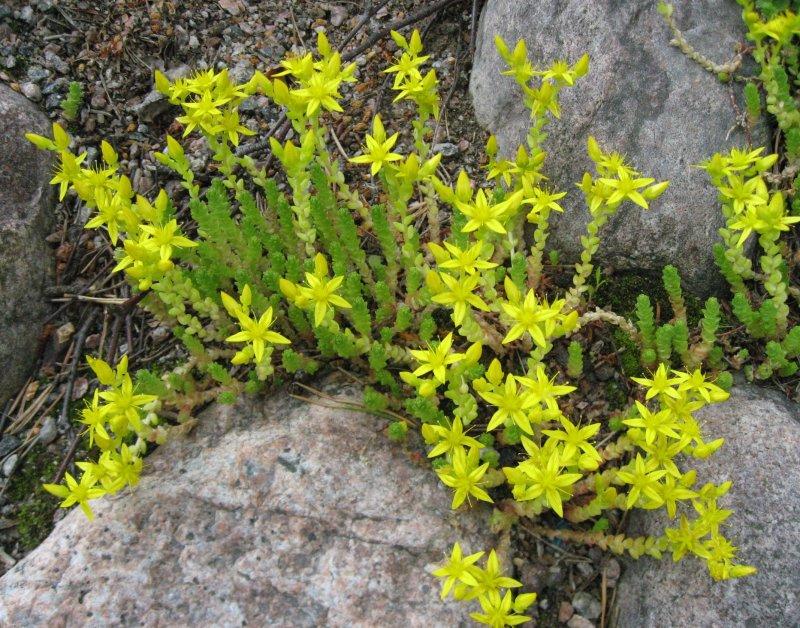
Scientific Classification
Family: Crassulaceae
Subfamily: Sedoideae
Tribe: Sedeae
Subtribe: Sedinae
Genus: Sedum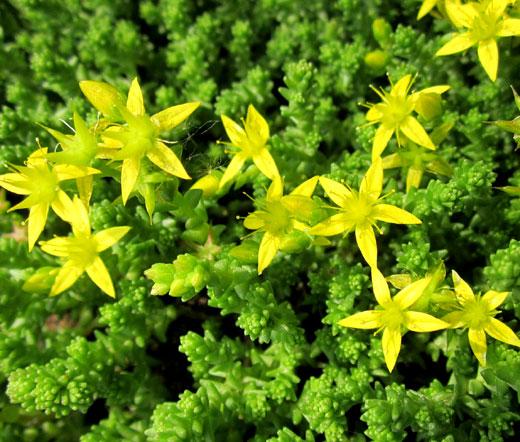
Description
Sedum acre is a tufted perennial herb that forms mat-like stands up to 5 inches (12.5 cm) tall. Much of the year the stems are short, semi prostrate and densely clad in leaves. At the flowering time in June and July, the stems lengthen and are erect, somewhat limp and often pinkish-brown with the leaves further apart. The leaves are alternate, fleshy and shortly cylindrical with a rounded tip. They are also sometimes tinged with red. The starry flowers are bright yellow in color.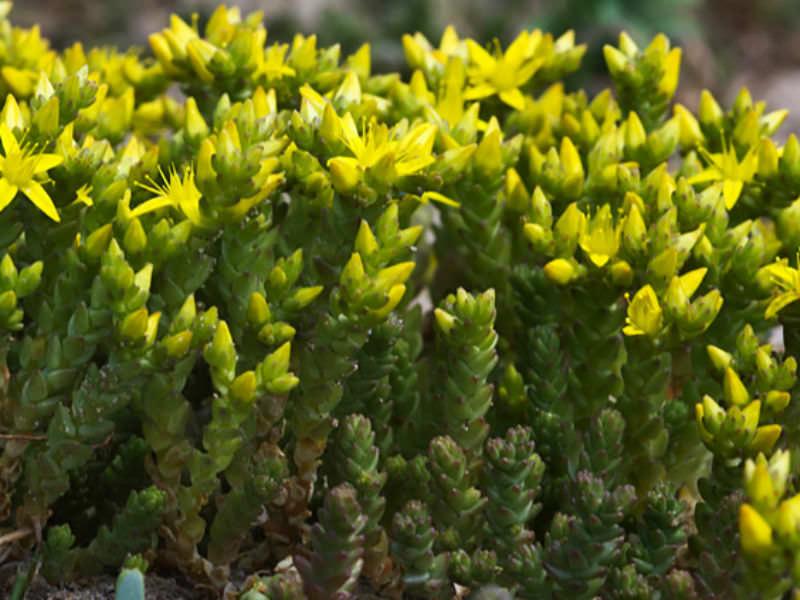
How to Grow and Care
There are few plants more forgiving of sun and bad soil than Sedum plants. Growing them is easy, so easy, in fact, that even the most novice gardener can excel at it. When growing Sedum, keep in mind that Sedum plants need very little attention or care. They will thrive in conditions that many other plants thrive in, but will do just as well in less hospitable areas. They are ideal for that part of your yard that gets too much sun or too little water to grow anything else. A common name for Sedum is Stonecrop, due to the fact that many gardeners joke that only stones need less care and live longer. Sedums need no additional water or fertilizer.
Sedum acre L.
Common Names
Goldmoss Stonecrop, Mossy Stonecrop, Biting Stonecrop, Stonecrop, Goldmoss Sedum, Wall-Pepper, Wall-Grass

Scientific Classification
Family: Crassulaceae
Subfamily: Sedoideae
Tribe: Sedeae
Subtribe: Sedinae
Genus: Sedum

Description
Sedum acre is a tufted perennial herb that forms mat-like stands up to 5 inches (12.5 cm) tall. Much of the year the stems are short, semi prostrate and densely clad in leaves. At the flowering time in June and July, the stems lengthen and are erect, somewhat limp and often pinkish-brown with the leaves further apart. The leaves are alternate, fleshy and shortly cylindrical with a rounded tip. They are also sometimes tinged with red. The starry flowers are bright yellow in color.

How to Grow and Care
There are few plants more forgiving of sun and bad soil than Sedum plants. Growing them is easy, so easy, in fact, that even the most novice gardener can excel at it. When growing Sedum, keep in mind that Sedum plants need very little attention or care. They will thrive in conditions that many other plants thrive in, but will do just as well in less hospitable areas. They are ideal for that part of your yard that gets too much sun or too little water to grow anything else. A common name for Sedum is Stonecrop, due to the fact that many gardeners joke that only stones need less care and live longer. Sedums need no additional water or fertilizer.
0
0
文章
Dummer. ゛☀
2017年10月01日

Scientific Name
Sedum rubrotinctum R.T.Clausen
It has also been classified as a hybrid plant of Sedum pachyphyllum and Sedum stahlii, named Sedum × rubrotinctum.
Common Names
Jelly Bean Plant, Jelly Bean, Pork and Beans, Brown Beans, Christmas Cheer, Banana Cactus
Scientific Classification
Family: Crassulaceae
Subfamily: Sedoideae
Tribe: Sedeae
Subtribe: Sedinae
Genus: Sedum
Description
Sedum rubrotinctum is an evergreen, succulent perennial with sprawling, leaning stems, up to 8 inches (20 cm) tall. The leaves are jelly bean shaped, 0.75 inch (1.9 cm) long, green with red-brown tips which turn to bronze in the summer months. The flowers are small, star-shaped and yellow in color.
How to Grow and Care
When growing Sedum, keep in mind that Sedum plants need very little attention or care. They will thrive in conditions that many other plants thrive in, but will do just as well in less hospitable areas. They are ideal for that part of your yard that gets too much sun or too little water to grow anything else. A common name for Sedum is Stonecrop, due to the fact that many gardeners joke that only stones need less care and live longer.
Sedum is easily planted. For shorter varieties, simply laying the Sedum on the ground where you want it to grow is normally enough to get the Sedum plant started there. They will send out roots from wherever the stem is touching the ground and root itself. If you would like to further ensure that the plant will start there, you can add a very thin covering of soil over the plant.
For taller Sedum varieties, you can break off one of the stems and push it into the ground where you would like to grow it.
Sedum rubrotinctum R.T.Clausen
It has also been classified as a hybrid plant of Sedum pachyphyllum and Sedum stahlii, named Sedum × rubrotinctum.

Common Names
Jelly Bean Plant, Jelly Bean, Pork and Beans, Brown Beans, Christmas Cheer, Banana Cactus
Scientific Classification
Family: Crassulaceae
Subfamily: Sedoideae
Tribe: Sedeae
Subtribe: Sedinae
Genus: Sedum

Description
Sedum rubrotinctum is an evergreen, succulent perennial with sprawling, leaning stems, up to 8 inches (20 cm) tall. The leaves are jelly bean shaped, 0.75 inch (1.9 cm) long, green with red-brown tips which turn to bronze in the summer months. The flowers are small, star-shaped and yellow in color.

How to Grow and Care
When growing Sedum, keep in mind that Sedum plants need very little attention or care. They will thrive in conditions that many other plants thrive in, but will do just as well in less hospitable areas. They are ideal for that part of your yard that gets too much sun or too little water to grow anything else. A common name for Sedum is Stonecrop, due to the fact that many gardeners joke that only stones need less care and live longer.

Sedum is easily planted. For shorter varieties, simply laying the Sedum on the ground where you want it to grow is normally enough to get the Sedum plant started there. They will send out roots from wherever the stem is touching the ground and root itself. If you would like to further ensure that the plant will start there, you can add a very thin covering of soil over the plant.
For taller Sedum varieties, you can break off one of the stems and push it into the ground where you would like to grow it.
0
2





